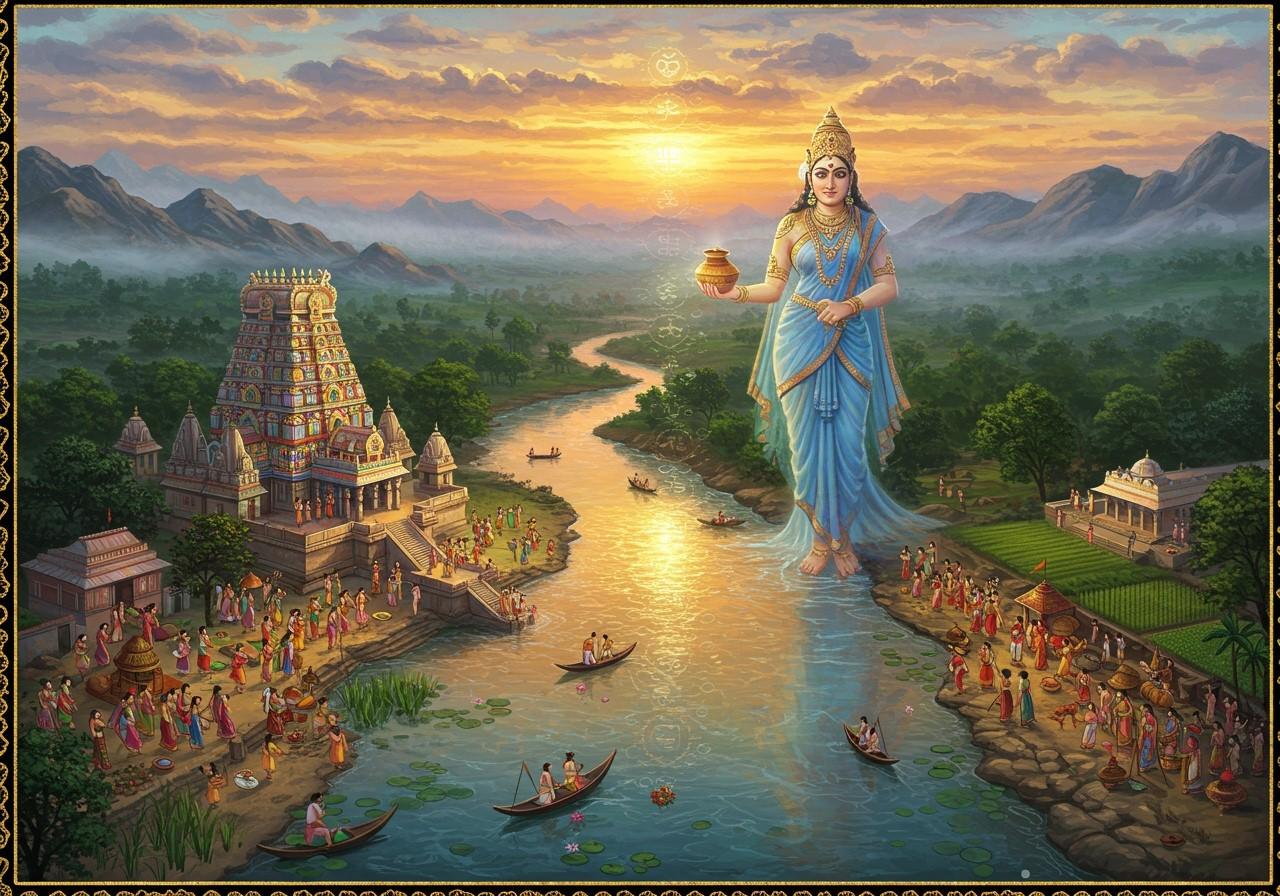
The Kaveri River holds profound cultural and spiritual significance in India, serving as a source of life and devotion for countless people. Beyond its vital resources, the river is also central to several disputes, most notably the Kaveri water dispute. This guide delves into the river’s origins, significance, and the controversies surrounding its waters.
Origin and Course of the Kaveri River
The Kaveri River begins its journey from the Brahmagiri Hill at Talakaveri in the Western Ghats of Karnataka. The Western Ghats’ geographical features significantly influence the river’s flow. Steeped in mythology, the river’s origin includes tales such as Sage Agastya and the sacred tank of Talakaveri. The river traverses Karnataka, Tamil Nadu, and Kerala before ultimately reaching the Bay of Bengal.
From the Western Ghats, the Kaveri River meanders through the Deccan Plateau, forming a rich delta in Tamil Nadu. This fertile delta supports agriculture, especially the cultivation of rice and sugarcane. Major tributaries, including the Hemavathi, Shimsha, and Arkavathi, converge with the Kaveri, fostering diverse ecological systems and supporting lush forests and vibrant wildlife.
Cultural, Spiritual, and Economic Importance
The Kaveri’s waters hold deep cultural and spiritual meaning within South Indian traditions. Ancient texts extol the river’s purity, and temples along its banks serve as venues for important rituals. Festivals like Kaveri Sankramana celebrate the river’s sacredness. The river is a source of inspiration for South Indian art, music, and dance, representing purity and prosperity, deeply interwoven into the region’s cultural fabric.
The river is an economic lifeline for communities along its course. It sustains agriculture, with rice and sugarcane being crucial crops, while fisheries thrive on its rich aquatic life. The Kaveri also powers hydroelectric plants and supports various industries. However, challenges such as pollution pose a threat to its health and economic role.
The Kaveri Water Dispute
The Kaveri water dispute is a long-standing conflict between the Indian states of Tamil Nadu and Karnataka over water sharing. The origins of the dispute trace back to agreements made in 1892 and 1924 between the Madras Presidency and the Kingdom of Mysore. The river, which spans 802 kilometers, has a basin area of 44,000 km² in Tamil Nadu and 32,000 km² in Karnataka. The conflict intensifies during periods of insufficient monsoon rainfall. Recent developments include Tamil Nadu appealing to the Supreme Court for Karnataka to release water to support its crops, resulting in a court mandate for Karnataka to release a specified amount of water. The dispute is further complicated by the Krishna-Kaveri River issue.
Poojn.in: Supporting Your Kaveri River Rituals
Poojn.in offers a wide selection of essential puja items for rituals associated with the sacred Kaveri River. Our curated collection includes:
- Pure copper kalash and coconuts for water offerings, symbolizing purity and reverence.
- Traditional items like kumkum, turmeric, and flowers, essential for river worship ceremonies.
- Specially prepared Kaveri water in sealed containers, maintaining its sanctity for those who wish to honor the river from their homes.
- Complete puja kits with all the necessary items, including dhoop, deepam, and other traditional offerings, sourced from trusted vendors.
- Brass and copper vessels traditionally used in river worship rituals, adding authenticity to your ceremonies. Explore Copper Koshi and Copper Kosha Kushi on Poojn.in.
Visit Poojn.in to explore our complete collection. We offer pan-India delivery, bringing sacred items directly to your doorstep. Our customer service team is available to assist you in selecting the appropriate items for your specific ritual needs. Shop Now at Poojn.in
Note: Product availability may vary. Please check our website for current stock.
Conclusion
The Kaveri River is more than a waterway; it’s a life-giving force, nurturing the land, culture, and people of South India. From its origins in the Western Ghats to the fertile plains of Tamil Nadu, the Kaveri symbolizes prosperity and spiritual richness. It sustains agriculture, powers industries, and inspires art and tradition.
However, the river faces challenges, including pollution and water-sharing disputes, which threaten its health and the harmony of the region. By embracing sustainable practices and advocating for equitable solutions, we can protect the Kaveri for generations to come. Let the Kaveri’s story inspire us to cherish and conserve our natural heritage.


